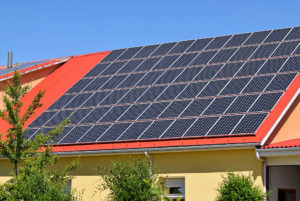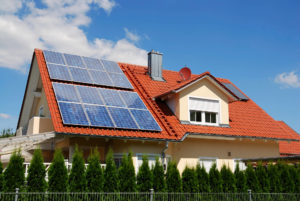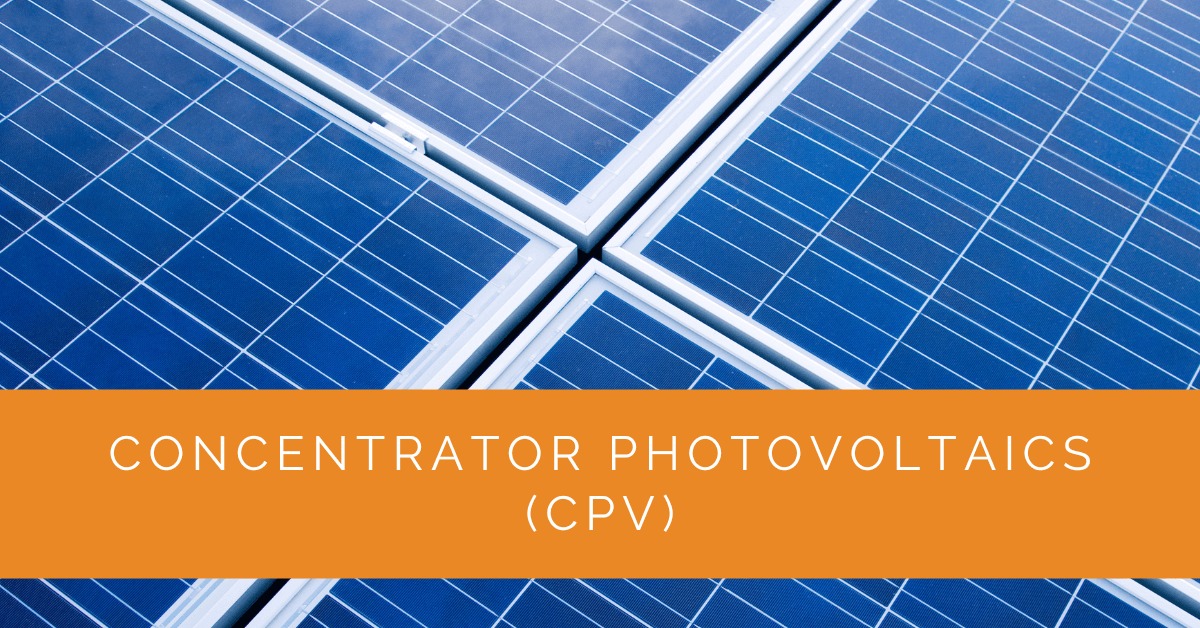Solar energy is a sustainable and abundant resource, and harnessing it efficiently is crucial. Concentrator Photovoltaics (CPV) technology offers a promising solution to maximize the conversion of sunlight into electricity. In this article, we’ll delve into the world of CPV, examining its working principles, advantages, challenges, and prospects in solar energy.
Contents
- 1 Key Takeaways
- 2 What is CPV?
- 3 How CPV Works
- 4 Types of Concentrator Photovoltaics
- 5 Advantages of CPV
- 6 Challenges and Considerations
- 7 Applications of CPV
- 8 The Future of CPV Technology
- 9 Case Study: Implementing CPV Technology in a Commercial Solar Power Plant
- 10 Expert Insights From Our Solar Panel Installers About Concentrator Photovoltaics (CPV)
- 11 Experience Solar Excellence with Us!
- 12 Conclusion
Key Takeaways
- Concentrator Photovoltaics (CPV) technology enhances solar energy conversion efficiency by concentrating sunlight onto high-efficiency solar cells using optical lenses or mirrors.
- CPV offers advantages such as increased energy efficiency, suitability for high-sunlight regions, and reduced material and space requirements.
- While CPV shows promise, it faces challenges, including cost factors, weather sensitivity, and maintenance requirements, which must be carefully considered for widespread adoption.
What is CPV?
The Essence of Photovoltaics
Photovoltaics, often abbreviated as PV, is the technology that converts sunlight into electricity. Solar cells, the building blocks of PV systems, play a pivotal role in this process. These solar cells are typically made of semiconductor materials, with silicon being the most common choice.
Concentrating Photovoltaics: An Overview
CPV takes the concept of PV further by concentrating sunlight onto solar cells using optical lenses or mirrors. This concentration significantly increases the sunlight reaching the solar cells, enhancing electricity generation capability.
Benefits of Concentrating Solar Energy
The benefits of CPV are multifaceted. By concentrating sunlight, CPV systems achieve higher efficiency in converting solar radiation into electricity. This increased efficiency means that CPV systems can generate more electricity for a given amount of sunlight, making them especially useful in regions with high solar radiation.
How CPV Works
Concentration and Sunlight Collection
CPV systems use optical lenses or mirrors to concentrate sunlight onto a small area of solar cells. This concentrated sunlight is then used to generate electricity. The lenses or mirrors are carefully designed to focus sunlight precisely onto the solar cells, maximizing their exposure to solar radiation.
Solar Cells in CPV Systems
CPV systems often employ high-efficiency solar cells, such as multi-junction or compound semiconductors, to maximize energy conversion. These advanced solar cells are engineered to operate efficiently under high-concentration sunlight conditions, making them a perfect match for CPV technology.
Tracking the Sun for Maximum Efficiency
To ensure optimal sunlight concentration throughout the day, CPV systems utilize two- or one-axis tracking mechanisms to follow the sun’s path across the sky. This dynamic tracking ensures that the sunlight always focuses on the solar cells, optimizing energy generation.

Types of Concentrator Photovoltaics
CPV technology is diverse, with various types designed to suit different applications and environments. Some common types include:
- Refractive CPV, uses lenses to concentrate sunlight.
- Reflective CPV, employs mirrors to redirect sunlight onto solar cells.
- Hybrid CPV, which combines both refractive and reflective elements for enhanced efficiency.
Each type has unique features and benefits, making CPV adaptable to various solar energy projects. The choice of CPV type depends on factors such as available sunlight and the specific application’s requirements.
Advantages of CPV
Increased Energy Efficiency
One of the most significant advantages of CPV is its increased energy efficiency. CPV systems achieve high concentration ratios, leading to superior conversion efficiency compared to traditional PV systems. This means CPV can generate more electricity using fewer solar cells, making it a cost-effective choice.
Utilizing High-Concentration Sunlight
CPV is particularly effective in areas with high direct normal irradiance, which can significantly boost electricity generation. Regions with abundant direct sunlight, such as deserts, benefit greatly from CPV technology due to its ability to concentrate sunlight effectively.
Reduced Material and Space Requirements
The high efficiency of CPV allows for smaller solar cell modules and reduced land usage, making it a cost-effective choice for solar energy projects. Since CPV systems generate more electricity from a given area, they require fewer materials and less space, reducing the overall environmental footprint.
Challenges and Considerations
While CPV holds promise, it also faces challenges that must be addressed for widespread adoption. These include:
Cost Factors
CPV systems, particularly those with high-concentration capabilities, can be expensive to manufacture and install. However, as technology advances and economies of scale come into play, the cost is expected to decrease, making CPV more accessible.
Weather and Environmental Impact
CPV systems are sensitive to environmental conditions and require regular maintenance to ensure optimal performance. Harsh weather, such as heavy rain or snow, can temporarily disrupt sunlight concentration, affecting energy production.
Maintenance and Durability
CPV systems require precise alignment of optical components to concentrate sunlight accurately. Regular maintenance is essential to keep these components in proper working order. Additionally, the durability of CPV materials, such as lenses and mirrors, must be considered to ensure long-term reliability.

Applications of CPV
CPV technology is expected to grow and expand its presence in various applications, including:
Utility-Scale Solar Power Plants
Large-scale solar power plants can benefit from CPV technology, offering higher efficiency and lower land requirements than traditional PV systems. CPV can help meet the growing demand for renewable energy cost-effectively.
Remote and Off-Grid Energy Solutions
CPV is well-suited for remote and off-grid locations with limited access to a reliable power grid. These systems can provide sustainable electricity to remote communities, improving their quality of life.
Space Exploration and Satellite Technology
CPV technology is also used in space exploration and satellite technology, where it efficiently generates electricity in the harsh conditions of outer space. CPV modules provide a compact and reliable power source for space missions.
The Future of CPV Technology
Ongoing research and innovations in CPV technology pave the way for sustainable solar energy solutions. Integrating energy storage systems and advancements in high-concentration cells are among the developments driving CPV’s future.
Case Study: Implementing CPV Technology in a Commercial Solar Power Plant
Background
At Solar Panels Network USA, we are committed to advancing solar technology and providing sustainable energy solutions. Concentrator Photovoltaics (CPV) represents a significant innovation in solar energy, offering higher efficiency through sunlight concentration. This case study explores our successful implementation of CPV technology in a commercial solar power plant, highlighting the benefits and challenges we encountered.
Project Overview
A commercial client approached us to design a solar power plant that maximizes energy production while minimizing land use and material costs. Recognizing the potential of CPV technology in achieving these goals, we proposed a solution that integrates high-concentration CPV systems. Our plan emphasized optimizing sunlight concentration and ensuring the long-term efficiency of the solar plant.
Implementation
- Selecting CPV Systems: We chose high-efficiency CPV modules designed to operate under concentrated sunlight conditions. These modules featured advanced optical lenses and mirrors to focus sunlight onto small, high-efficiency solar cells. By selecting these state-of-the-art CPV systems, we aimed to achieve maximum energy conversion.
- Precise Installation Techniques: Our team employed meticulous installation techniques, ensuring the accurate alignment of optical components to concentrate sunlight effectively. We installed two-axis tracking systems to follow the sun’s path across the sky, maintaining optimal sunlight focus on the solar cells throughout the day.
- Ongoing Monitoring and Maintenance: To sustain the efficiency of the CPV systems, we implemented a comprehensive monitoring schedule. Regular inspections using advanced imaging techniques allowed us to detect any misalignments or performance issues early. Routine maintenance ensured that the optical components remained clean and properly aligned, crucial for optimal sunlight concentration.
Results
- Increased Energy Production: The CPV systems demonstrated significantly higher energy output compared to traditional PV systems. The concentration of sunlight onto high-efficiency solar cells resulted in superior conversion efficiency.
- Reduced Land and Material Use: The high efficiency of CPV modules allowed us to use fewer solar cells, reducing overall material costs. The compact design of CPV systems minimized land usage, making it a cost-effective solution for large-scale solar projects.
- Cost Savings and ROI: The enhanced efficiency of CPV systems led to lower operational costs and faster return on investment. Despite the initial higher costs of CPV technology, the long-term savings and increased energy production justified the investment.
- Client Satisfaction: The client was impressed with the high energy output and the innovative approach of CPV technology. The successful implementation and ongoing performance monitoring ensured the client’s confidence in their solar investment.
Summary
This case study demonstrates the effectiveness of Concentrator Photovoltaics (CPV) technology in a commercial solar power plant. By concentrating sunlight onto high-efficiency solar cells, CPV systems achieve superior energy conversion and reduced material and land use. At Solar Panels Network USA, our commitment to innovative solutions and meticulous implementation ensures optimal performance and client satisfaction. CPV technology represents a significant advancement in solar energy, offering promising prospects for sustainable and efficient solar power generation.
Expert Insights From Our Solar Panel Installers About Concentrator Photovoltaics (CPV)
CPV technology is revolutionary in maximizing energy conversion by concentrating sunlight onto high-efficiency solar cells. This method is particularly beneficial in areas with abundant direct sunlight.
Senior Solar Installer
Using CPV systems, we’ve seen significant improvements in energy output with reduced material and space requirements. The tracking mechanisms in CPV ensure optimal sunlight focus, enhancing overall efficiency.
Lead Solar Technician
While CPV systems require precise maintenance, the benefits far outweigh the challenges. High-concentration sunlight regions greatly benefit from CPV, making it a cost-effective solution for large-scale solar projects.
Chief Solar Engineer
Experience Solar Excellence with Us!
Trust in Solar Panels Network USA, where our seasoned experts deliver top-quality solar solutions for homes and businesses nationwide. With a legacy of countless successful installations and a commitment to sustainable energy, we’re your reliable partner in the solar journey. Ready for a brighter, eco-friendly future? Call us now at (855) 427-0058 and harness the power of the sun!
Conclusion
Concentrator Photovoltaics (CPV) is a technology poised to revolutionize the solar energy landscape. With its high-efficiency solar cell modules, ability to concentrate sunlight and diverse applications, CPV holds the potential to increase the utilization of solar power significantly. As CPV technology advances, we can anticipate a brighter, more sustainable future powered by the sun.
Incorporating CPV systems into the solar panel supply chain, especially in areas with high direct normal irradiance, can boost overall energy generation and contribute to a cleaner, greener future. Whether on a rooftop, in a solar power plant, or space, CPV’s potential to convert sunlight into high efficiency is a promising step towards a more sustainable energy future. With ongoing research and development, CPV is poised to play a vital role in meeting the world’s growing energy needs while reducing our reliance on fossil fuels.
About the Author
Solar Panels Network USA stands at the forefront of solar energy solutions, driven by a team of seasoned solar engineers and energy consultants. With over decades of experience in delivering high-quality solar installations and maintenance, we are committed to promoting sustainable energy through customer-centric, tailored solutions. Our articles reflect this commitment, crafted collaboratively by experts to provide accurate, up-to-date insights into solar technology, ensuring our readers are well-informed and empowered in their solar energy decisions.

